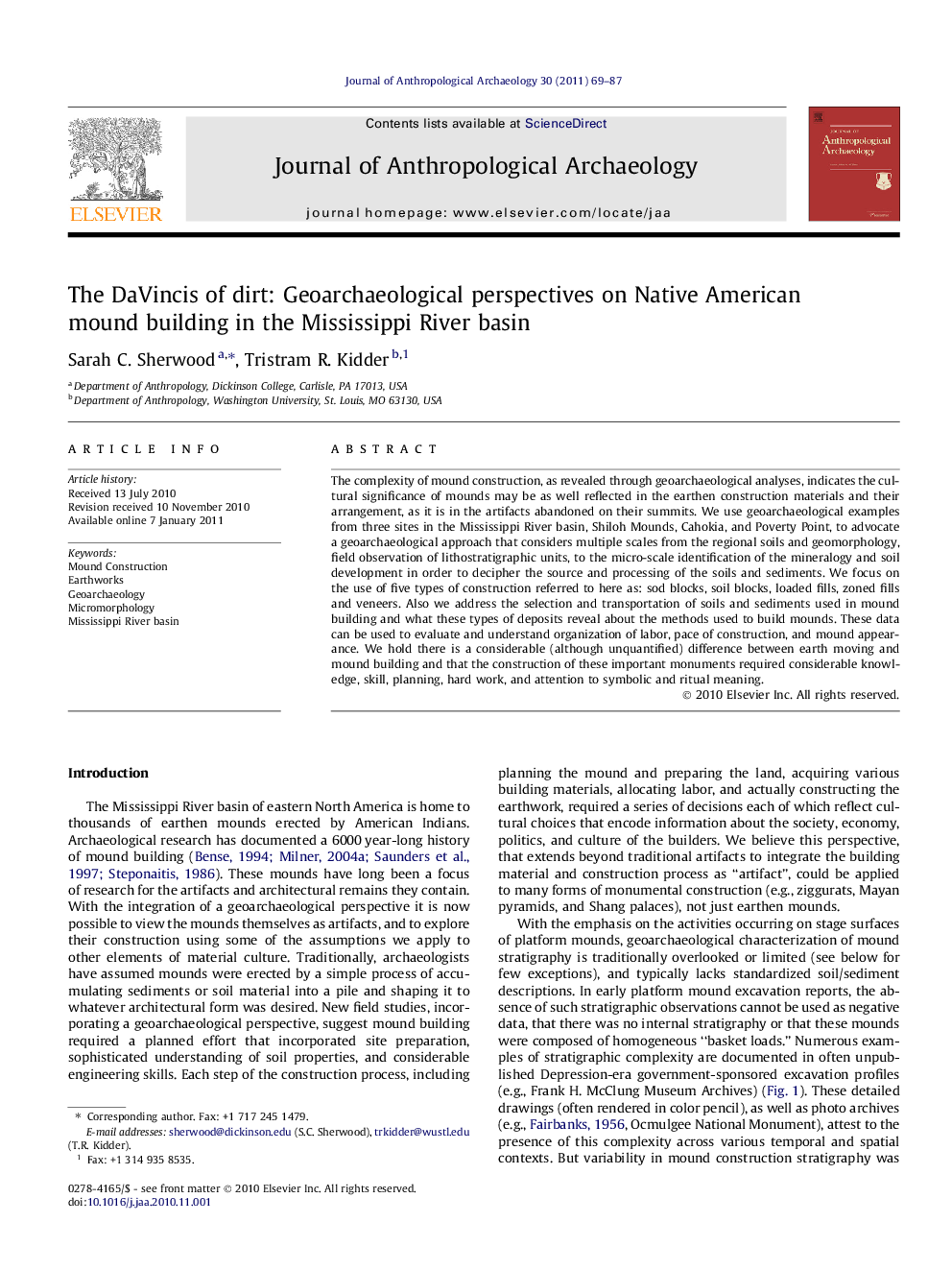| Article ID | Journal | Published Year | Pages | File Type |
|---|---|---|---|---|
| 1035059 | Journal of Anthropological Archaeology | 2011 | 19 Pages |
The complexity of mound construction, as revealed through geoarchaeological analyses, indicates the cultural significance of mounds may be as well reflected in the earthen construction materials and their arrangement, as it is in the artifacts abandoned on their summits. We use geoarchaeological examples from three sites in the Mississippi River basin, Shiloh Mounds, Cahokia, and Poverty Point, to advocate a geoarchaeological approach that considers multiple scales from the regional soils and geomorphology, field observation of lithostratigraphic units, to the micro-scale identification of the mineralogy and soil development in order to decipher the source and processing of the soils and sediments. We focus on the use of five types of construction referred to here as: sod blocks, soil blocks, loaded fills, zoned fills and veneers. Also we address the selection and transportation of soils and sediments used in mound building and what these types of deposits reveal about the methods used to build mounds. These data can be used to evaluate and understand organization of labor, pace of construction, and mound appearance. We hold there is a considerable (although unquantified) difference between earth moving and mound building and that the construction of these important monuments required considerable knowledge, skill, planning, hard work, and attention to symbolic and ritual meaning.
Graphical abstractFigure optionsDownload full-size imageDownload high-quality image (53 K)Download as PowerPoint slideResearch highlights► A geoarchaeological perspective suggests mound building required a planned effort that incorporated site preparation, sophisticated understanding of soil properties, and considerable engineering skills. ► We concentrate on construction identifying 5 types of deposits: sod block, soil block, loaded fill, zoned fill and veneers. ► Mounds are complex architectural edifies that are part of the symbolic and ritual practices of these societies.
